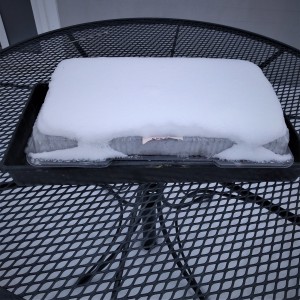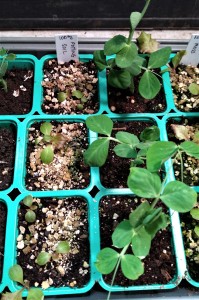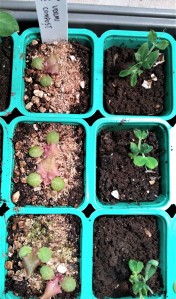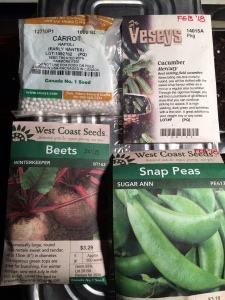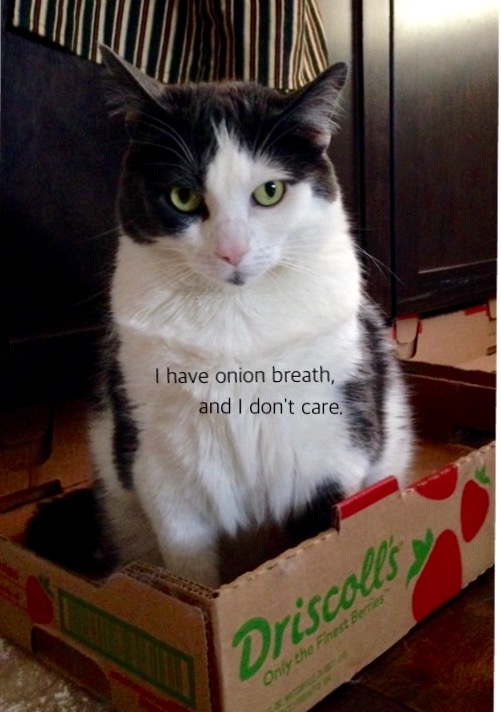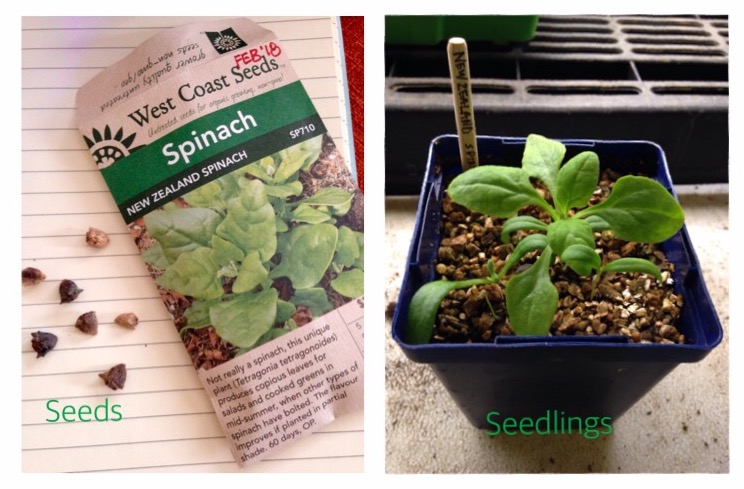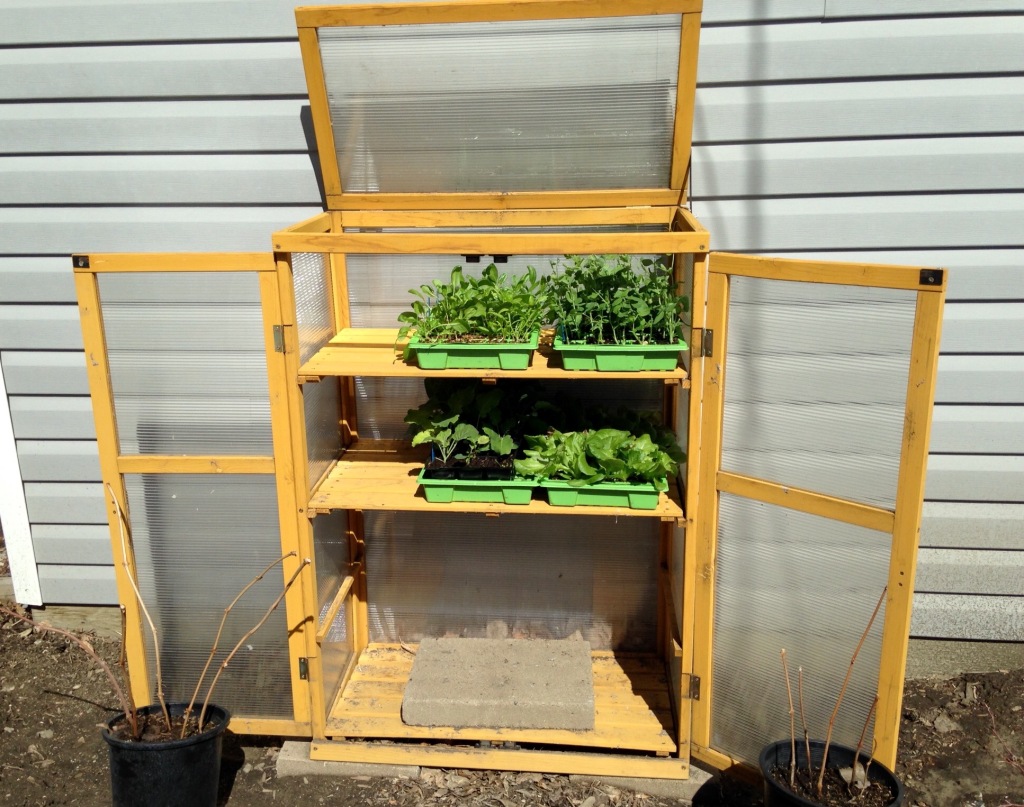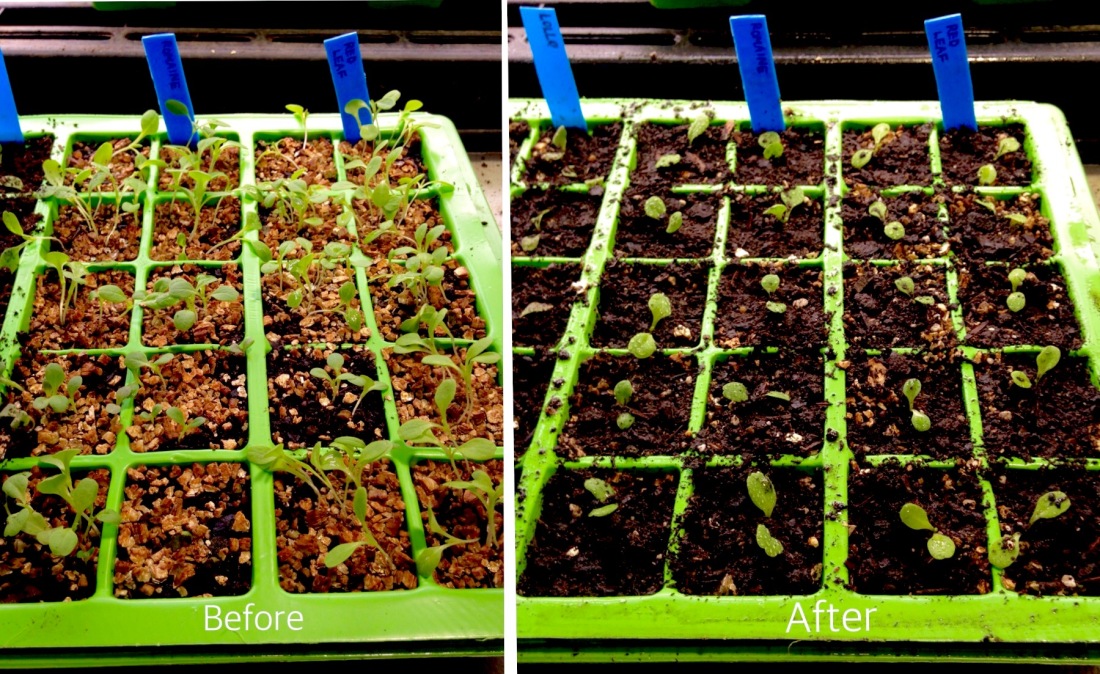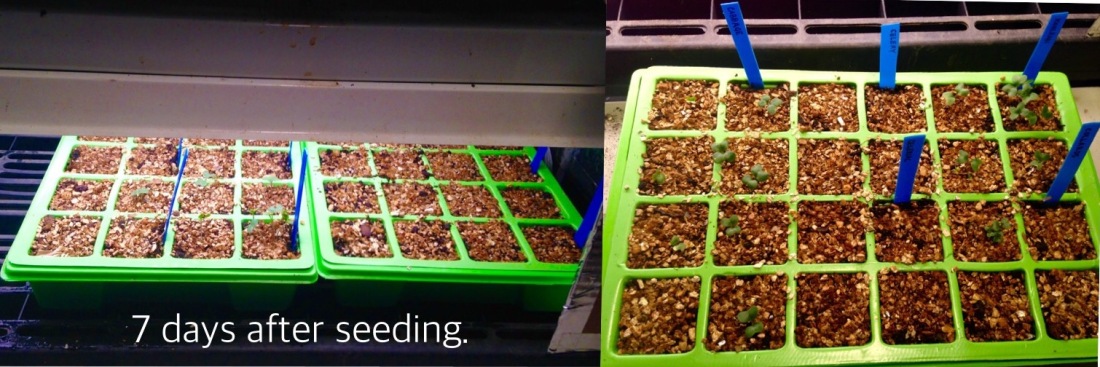Finally! Even though there’s still 6 inches of snow covering everything, I’m planting!
My firsts under the lights include the cold hardy salads, mustards, and brassicas. They germinated in the dark and after a week they’re a bit leggy. Hopefully putting them under lights will remedy that.
I started Champion collards, Kolibri kohlrabi, and some rutabagas to finish off the tray. For lettuce, I put a bunch of seed in rows in a tin tray for potting out later on. I’ve got Buttercrunch, Fortress, Leaf (saved), Oak Leaf, Red Deer Tongue, Red Leaf (saved), and Romaine, on the go. And then my other greens are Mizuna, Mustard, Pak Choi, and Tatsoi. Still working on the right time of year to grow these without the flea beetles or the cabbage moths getting them.
This weekend, I made some more of my “new recipe” potting soil (50% peat + 50% vermicompost) and seeded alliums, peas, spinach, and herbs. I’m not too sure what I’m doing with some of these herbs, but I’ll start now so there’s time for corrections and replantings!
I’m trying some new varieties of onions: Gabriella, and Bandit leeks (in addition to Lancelot and Tadorna leeks). The herbs I started are Bloody Dock, curled Chervil, cilantro, Good King Henry, Italian dark parsley, and sorrel. Wish me luck.
The peas are all snap peas (my favourite!). Perhaps this year I’ll grow enough to make it into the kitchen? Snap (saved seed), Sugar Ann, and Sugar Snap are the varieties. And last is my dear spinach. This year I’ve add a new variety called Corvair, also sown are Bloomsdale, Space, and the most delicious Viroflay.
And for perspective, here’s a shot of my winter sowing container outside, clearly not being pampered in any way. I wonder when the snow will all be melted this year….
